Tirumalai
Historical background
This small village lies some 18 km north east of Polur (Tiruvannamalai district). The Jain caves, really rock-cut sanctuaries, now encased in a 16th century brick structure, date probably of the 10th century. They are loosely known as Kundavai Jinalaya. Kundavai was the pious elder sister of the great Rajaraja Chola (985-1014). She was responsible not only for giving a number of gifts to Shaiva temples in Thanjavur and elsewhere, but also erecting Jaina temples in various parts of the Chola country.
Read more
The Cholas, in fact, greatly supported Jaina art and architecture. An inscription near the most noteworthy sculpture on Tirumalai Hill, the huge Neminatha (4,86 m.), points to the fact that it was funded by Kundavai. It was probably enshrined in a structure which has disappeared and has been replaced by a more recent building. On top of the hill, a small shrine shelters a 10th century image of Parshvanatha. All around it, carved on the sheer rock are numerous padas, footprints, of holy personages along with a wealth of inscriptions. Further 10th century carvings are to be seen in one of the caves at the foot of the hill, the so-called Parshvanatha shrine.
The caves are carved in the hill rising near two 16th century temples dedicated to Vardhamana Mahavira and Neminatha. The paintings, inspired by Jaina lore, decorating the rock-cut shrines date probably of the 16th century. Among these are representations of the wold of the mortals, at whose centre is Jambudvipa, the continent where India and Mount Meru, represented by a circle, are sited. Two other continents, separated by seas encircle the innermost one. Another important theme is the samavasarana, the place where all creatures (ascetics; the various categories of heavenly beings; nuns and women; men; animals) have an opportunity to acquire wisdom. It is a divine pavilion built by the devas after a Jain Tirthankara (a ‘ford maker’, i.e. a Jain saviour) has attained omniscience. At the centre if the hall sits the Tirthankara flanked by his disciples. Unfortunately, only one of the many Jain edifying narratives, that of Agnila, has partly survived. The depictions of Jaina yakshas and yakshis have not fared better, the only surviving is that of Jivamalini. A wealth of finely drawn textile patterns, geometrical motifs, rows of geese; festoons of pearls, lotus petals, decorates the ceilings of the sanctuaries and their antechambers.
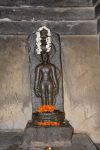
Date: 10th (?) century
Description: Image of the Jain saviour Parshvanatha enshrined in a structure on top of theTirumalai hill.
Location: Tamil Nadu Temple;Jaina Monuments;Tirumalai
Positioning: Hilltop shrine
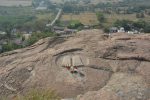
Date: 13th century (?)
Description: One of the many padas, ‘feet, footprints’ of a holy person, most of them with a dedicatory inscription, carved on sheer rock on the top of Tirumalai Hill.
Location: Tamil Nadu Temples;Jaina Monuments;Tirumalai
Positioning: Summit of the hill

Description: Way to the hill top
Location: Tamil Nadu Temple;Jaina Monuments;Tirumalai
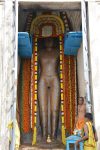
Date: 10th century
Description: Rock-cut image of the Jain saviour Neminatha, 4.86 m high. The image was commissioned by Kundavai, sister of the Chola king Rajaraja (r. 985-1014).
Location: Tamil Nadu Temple;Jaina Monuments;Tirumalai
Positioning: Kundavai Jinalaya

Date: Possibly 14th century, restored
Description: Kundavai Jinalaya, exterior. The original Chola structure enshrining the Neminatha image has disappeared and has been replaced at a later date.
Location: Tamil Nadu Temple;Jaina Monuments;Tirumalai
Positioning: Kundavai Jinalaya
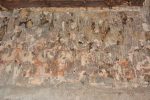
Date: Paintings, 16th-17th century
Description: Fragments of paintings: Floral and foliage motifs.
Location: Tamil Nadu Temple;Vardhamana Mahavira Temple;Tirumalai
Positioning: Upper part of the walls
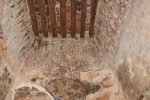
Date: Paintings, 16th-17th centuries
Description: Vardhamana temple paintings and detail of the ceiling rafters.
Location: Tamil Nadu Temple;Vardhamana Mahavira Temple;Polur
Positioning: Ceiling
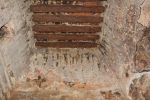
Date: Paintings, 16th-17th centuries
Description: View of the vestiges of paintings and of the wooden rafters beneath the brick superstructure.
Location: Tamil Nadu Temple;Vardhamana Mahavira Temple;Tirumalai
Positioning: Ceiling
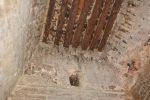
Date: Paintings, 16th-17th century
Description: Vardhamana temple paintings and detail of the ceiling rafters.
Location: Tamil Nadu Temple;Vardhamana Mahavira Temple;Tirumalai
Positioning: Ceiling
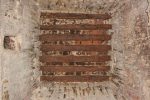
Date: 16th-17th century
Description: View of the wooden rafters supporting the brick superstructure.
Location: Tamil Nadu Temple;Vardhamana Mahavira Temple;Tirumalai
Positioning: Ceiling
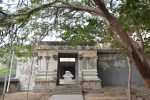
Date: 16th-17th century
Description: Entrance to the Vardhamana Mahavira and Neminatha temple complex at the foot of Tirumalai Hill.
Location: Tamil Nadu Temple;Vardhamana Mahavira Temple;Tirumalai
Positioning: Gateway
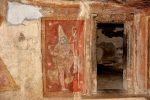
Date: Paintings, 16th century
Description: Dvarapala at the entrance of a rock cut shrine.
Location: Tamil Nadu Temple;Jaina Monuments;Tirumalai
Positioning: Jaina rock-cut shrines, antechamber
1 2 3 … 6 Next »